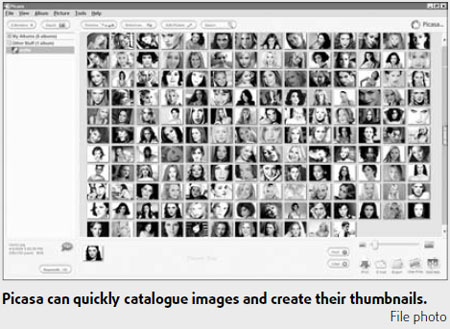
|
LIFE> Fashion
 |
|
The best Google tools that you never use
(China Daily)
Updated: 2009-02-02 14:41 Google's headline applications - search, Chrome, and Gmail - get all the attention. But behind the scenes, the company has released an impressive array of applications that most people have never heard of - or used. As you might expect, they're all designed to make it easier for people to use today's Internet more efficiently - and they're all free.  Google docs If you don't know anything about Google Docs (http://docs.google.com), ask your kids. They're probably already using it. The online word processor, spreadsheet, and presentation program that form the core of Google Docs are all capable tools in their own right - and they're compatible with the files you're probably already creating with other programs. There's good reason, too, to start experimenting with online versions of applications that formerly were desktop bound. First, you can access them from anywhere that you can find a public or non-public computer with internet access. Second, the documents you create with Google Docs can be worked on collaboratively with other Docs users. And third, lots of vendors - including Microsoft - are readying online versions of their applications. Docs has tight integration with other Google services, including Gmail. Send a doc as an e-mail message, for instance, and you'll find that your Gmail address book is accessible. Blogger Have something to say? Blogging is now a time-honored way to say it in the Internet age. And Google's Blogger tool (http://www.blogger.com) is one of the easiest ways to get started. If you have a Google account through your use of Gmail, iGoogle, or another Google service, you're about two clicks away from having your own blog. Simply log on to Blogger (http://www.blogger.com), give your blog a name, select an address, choose a look and feel, and within five minutes you can start composing your first blog entry. If you think what you have to say might actually find an audience, you can even try to make some money from your blog by attaching some of Google's Adsense (https://www.google.com/adsense) ads to it. Your Adsense account will give you a running daily tally of how much revenue you bring in through the ads. Picasa You can spend a lot of money on software to organize and manipulate your digital photographs. Or you can use the free Picasa http://picasa.google.com). Picasa has come a long way from its early days when it worked with only the most common image formats, such as jpeg. Now in version 3, the tool currently supports dozens of image file formats, including many of the RAW formats used by today's advanced digital SLR cameras. Point Picasa at a folder or drive full of photographs, and it quickly catalogues them and creates thumbnails of the images. Browsing photographs is handled elegantly, with smooth transitions from screen to screen as you page through your photos. Double-click a photo, and a larger version appears, along with tools that allow you to perform some of the most common editing functions, including adjusting lighting, straightening, cropping, or fixing red eye. There's even an "effects" tab that allows you quickly to turn a color photo into a black-and-white or sepia version. Effects are cumulative, as well, so you can apply, for instance, a "soft focus" effect on top of a black and white rendering. The tool is available for both PC and Mac. Notebook When you surf the Web, how often do you copy text, pictures, addresses, phone numbers, Web addresses, or other information into a word processing or e-mail document - only to lose the information when you need to find it again? If you understand the problem, you'll also understand the reason that Google created Notebook (http://www.google.com/notebook). As its name implies, Google Notebook is designed to hold snippets of information that you collect in your travels around cyberspace. Notebook itself is the model of simplicity. Resembling a word processing document, notebook provides a blank area where you can paste information from any Web page or application. Once pasted, the information is contained in a block, which can then be moved, labeled, categorized, or commented upon. Because there's never a need to "save" your notebook, you'll never accidentally lose information that you put in your notebook. Alerts If there's a topic or a part of the Web that you repeatedly search for updates, you can save time and energy by using Google Alerts (http://www.google.com/alerts). Google Alerts draws upon Google's main search engine to notify you when new entries for a particular news item, blog, Web page update, or video appears. Defining an alert is simple. Log on to the Google Alerts page, define the type of alert you would like to receive, specify how often the alert should be delivered, and provide the e-mail address to which it should be sent. Alerts are aggregated results of your search term. DPA
|